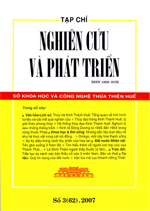Ginkgo, một cây hóa thạch sống/Ginkgo tree, a living fossil
Tóm tắt
Ginkgo là loài cây sống cách đây 270 triệu năm, vào kỷ thứ hai, trước cả loài khủng long trong kỷ Jura. Năm 1691, nhà thảo mộc người Đức Engelbert Kaempfer mô tả cây lần đầu tiên ở Nhật Bản nhưng cây còn sống nhiều ở Trung Quốc, trong các vườn chùa trong núi. Ông Kaempfer đưa cây về Âu châu những năm đầu thế kỷ 18 và một trăm năm sau cây mới được đem trồng bên Mỹ châu.
Ginkgo là một cây biệt chu, nghĩa là chùy phấn hoa và tiễu noãn nằm trên hai cây đực và cái khác nhau. Hạt phấn hoa mang hai bao phấn đằng mút có tinh dịch. Vào mùa xuân, những hạt phấn hoa rời cây được gió đưa lại cây cái thì luồn qua lỗ noãn để lọt vào buồng thụ phấn rồi phát triển thành giao tử. Tế bào giao tử phân chia, cấu thành hai tinh trùng, đợi thời kì thụ tinh vào mùa thu thì phối hợp với noãn tâm. Noãn tâm phồng lớn, tiếp tục ngay cả khi quả bị rơi xuống đất, cho thoát ra một mùi thúi vì chất butanoic acid.
Sách Thần Nông bản thảo kinh đã có chỉ cách dùng là cây làm thuốc thông máu, chữa phổi. Cũng có sách xưa cho biết dùng lá chữa hư da, vết hoe, đau đầu. Ngày nay, những chất gingkolid trong cây được chứng minh có những tác dụng kháng oxy hóa, bảo vệ thần kinh thuộc cơ chế bệnh Alzheimer. Ngoài ra, cây cũng còn có tính chất kìm chậm phát triển sự sa sút trí tuệ nhưng đồng thời tăng gia nguy cơ xuất huyết.
ABSTRACT
The Ginkgo tree is the living representative of the order Ginkgoales, a group of gymnosperms composed of the family Ginkgoaceae with the earliest leaf fossils dating back to 270 million years ago, before the Jurassis era (213 million years ago) of the Dinosaures. In 1691, the German Engelbert Kaempfer described the Ginkgo in Japan. The ginkgos had survived in China, mainly found in monastaries in the mountains. Ginkgo seeds were brought to Europe from Japan by Kaempfer in the early 1700’s and in America a century later.
The tree is dioecious, male and female trees are apart. The sex chromosomes are difficult to distinguish, so the tree’s gender is not easily classified. The pollen and ovules grow on the short spurts, very seldom on the leaves. When the ovules are fertilized they develop into yellowish, plumlike seeds consisting of a large nut with a fleshy outer layer. The seed has a silvery shine. The ripened fleshy seedcoat when falling on the ground and decaying has a disagreable odour likes rancid butter as a result of the presence of butanoic acid.
The used of the leaves as a medicine is said in the Chinese Shen Nung Pen Tsao Ching to be an aid for blood circulation and the lungs. An another ancient book mentions the use of the leaves for skintreatment, head sores and freckles. Now, it is showed that gingkokides in the tree have antioxidant, neuroprotective and cholinergic activities revelant to Alzheimer’s disease mechanism. Ginkgo biloba seems to slow the progression of dementia but increases the risk of bleeding.

